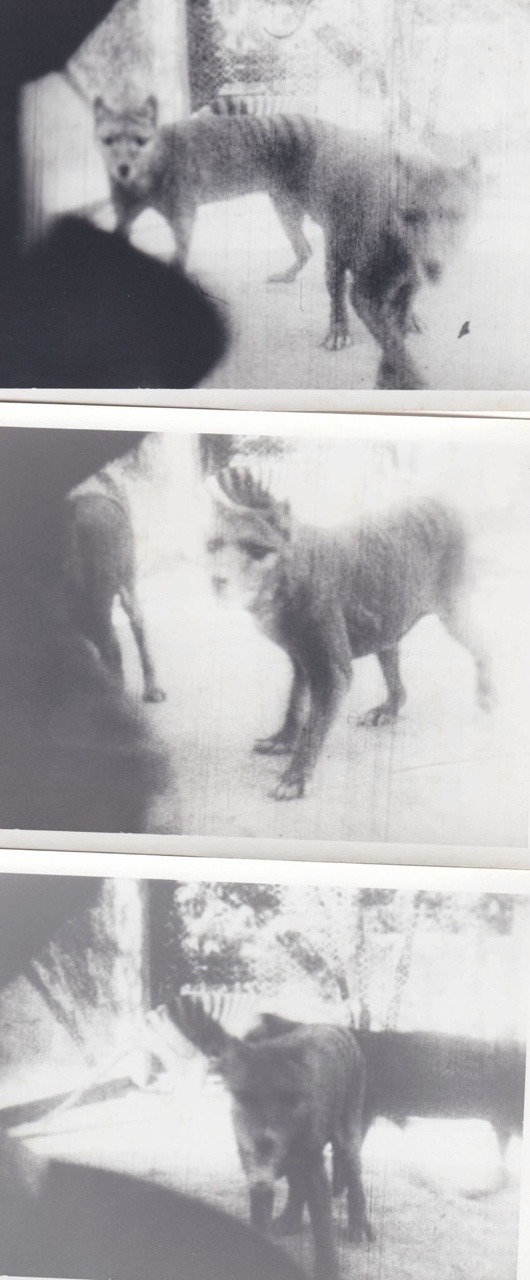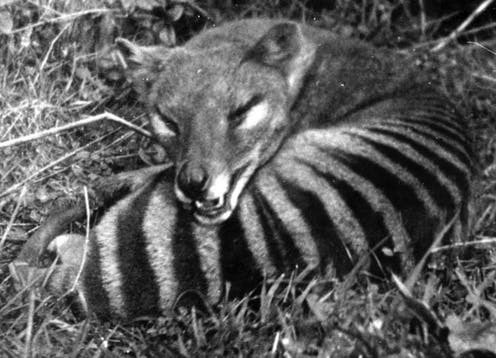Jackasslope - Cryptids & Co

More Posts from Jackasslope and Others

This is the most famous photo of Champ, the Lake Champlain monster. It was taken in 1977 by Sandra Mansi who was out with her family on the lake. As her sons waded in the water and she and her fiancé looked after them, Sandra noticed what she thought was a school of fish about 150 yards from the shore. After a little bit “the head and neck broke the surface of the water” and when her fiancé quickly ushered her sons out of the water, she snapped the photo with her camera. Sandra estimates the creature surfaced for four to seven minutes as they watched it. The original photo has been looked at by several experts and they can find no evidence of tampering with the photo to fake it. As of now, this is the most solid evidence of a monster in Lake Champlain.

An Endling is the last known member of a species or subspecies. The endling’s death means the end of the species as a whole. The word was supposedly coined by Robert Webster in the mid 1990s. The term is used, however, it still does not have an entry in The Merriam-Webster Dictionary despite Robert trying to get it into the dictionary before his death in 2004. The endling for the Thylacine was called Benjamin.
In Washington State killing Bigfoot is a felony but in Texas Bigfoot is considered an invasive species and can be hunted at will.
This sounds like one of those cutesy funny cryptid posts but that is actually the legal status of Bigfoot in those two states, you can look it up.

Gef the Talking Mongoose said a number of notable things in his time living at the home of the Irvings on the Isle of Man. He could speak a number of different languages according to those he spoke to, including but not limited to Welsh, Spanish, and Russian. However, even though he could speak more than English, he once claimed that the Irvings were the ones that had taught him to speak: “For years, I understood all that people said, but I could not speak until you taught me”.




Colourised footage of Benjamin, the last know Tasmanian Tiger (Thylacine).
Benjamin died on September 7th, 1936 in Hobart zoo. It is believed that he died out of neglect, as he was locked out of his shelter and was exposed to the searing hot sun and freezing cold night of Tasmania.
The Thylacine was one of the last large marsupials left on Australia (the other being the Kangaroo) after a great extinction event occurred around 40 thousand years ago. This extinction event, caused mainly by the arrival of humans, wiped out 90% of Australia’s terrestrial vertebrates, including the famous Megafauna.
The Thylacine was around 15-30kg (33-66lbs), were carnivorous, and had numerous similarities to other species like dogs, despite not being related and purely by chance, in a phenomenon known as convergent evolution (just like the ability to fly of bats and birds, despite following different evolutionary paths). Not only that, they could open their jaws up to 120 degrees, could hop around on two legs like a kangaroo, and both males and females had pouches.
Lastly in a cruel twist, the Tasmanian government decided to protect the Thylacine - just 59 days before the last one died, in a very notable case case of “Too little too late”. To date, many biologists believe that there are still Thylacine roaming the wild plains of Australia.



Some beautiful 35mm stills from a 1928 film of three thylacines residing at the Beaumaris Zoo, Hobart. Stills taken by James Malley.
-
 annae4ev5 liked this · 6 months ago
annae4ev5 liked this · 6 months ago -
 gamelpar reblogged this · 7 months ago
gamelpar reblogged this · 7 months ago -
 cosmogenous2 liked this · 9 months ago
cosmogenous2 liked this · 9 months ago -
 pleaseget-out reblogged this · 9 months ago
pleaseget-out reblogged this · 9 months ago -
 pleaseget-out liked this · 9 months ago
pleaseget-out liked this · 9 months ago -
 somethingcleverv reblogged this · 9 months ago
somethingcleverv reblogged this · 9 months ago -
 screamingwombatgirl reblogged this · 9 months ago
screamingwombatgirl reblogged this · 9 months ago -
 screamingwombatgirl liked this · 9 months ago
screamingwombatgirl liked this · 9 months ago -
 limitedfucks liked this · 10 months ago
limitedfucks liked this · 10 months ago -
 stargiirls liked this · 10 months ago
stargiirls liked this · 10 months ago -
 twiggewed reblogged this · 10 months ago
twiggewed reblogged this · 10 months ago -
 iamtryingtobelieve reblogged this · 10 months ago
iamtryingtobelieve reblogged this · 10 months ago -
 ziggystardust64 liked this · 11 months ago
ziggystardust64 liked this · 11 months ago -
 hedownwithskeletor liked this · 11 months ago
hedownwithskeletor liked this · 11 months ago -
 doctor-d00m liked this · 11 months ago
doctor-d00m liked this · 11 months ago -
 4etheri4n reblogged this · 11 months ago
4etheri4n reblogged this · 11 months ago -
 4etheri4n liked this · 11 months ago
4etheri4n liked this · 11 months ago -
 bobbie-doll reblogged this · 11 months ago
bobbie-doll reblogged this · 11 months ago -
 g4rxtch liked this · 1 year ago
g4rxtch liked this · 1 year ago -
 lennakasra liked this · 1 year ago
lennakasra liked this · 1 year ago -
 grabyoursaintsandpray liked this · 1 year ago
grabyoursaintsandpray liked this · 1 year ago -
 bluemoonperegrine reblogged this · 1 year ago
bluemoonperegrine reblogged this · 1 year ago -
 magicrosemage17 liked this · 1 year ago
magicrosemage17 liked this · 1 year ago -
 lightningcritter liked this · 1 year ago
lightningcritter liked this · 1 year ago -
 supersonic-peach reblogged this · 1 year ago
supersonic-peach reblogged this · 1 year ago -
 bobbie-doll reblogged this · 1 year ago
bobbie-doll reblogged this · 1 year ago -
 future-kat-lady reblogged this · 1 year ago
future-kat-lady reblogged this · 1 year ago -
 missymistake reblogged this · 1 year ago
missymistake reblogged this · 1 year ago -
 freeasfuck1 liked this · 1 year ago
freeasfuck1 liked this · 1 year ago -
 lordrumbuckaroo liked this · 1 year ago
lordrumbuckaroo liked this · 1 year ago -
 oldresidentonthissite reblogged this · 1 year ago
oldresidentonthissite reblogged this · 1 year ago -
 nothedevil reblogged this · 1 year ago
nothedevil reblogged this · 1 year ago -
 nothedevil liked this · 1 year ago
nothedevil liked this · 1 year ago -
 outofeverythingthisnamewasleft liked this · 1 year ago
outofeverythingthisnamewasleft liked this · 1 year ago -
 jesusismyhostage reblogged this · 1 year ago
jesusismyhostage reblogged this · 1 year ago -
 minimal23 liked this · 1 year ago
minimal23 liked this · 1 year ago -
 stubbornbliss liked this · 1 year ago
stubbornbliss liked this · 1 year ago -
 justastheyplayoursong reblogged this · 1 year ago
justastheyplayoursong reblogged this · 1 year ago -
 tattooedzombigirl reblogged this · 1 year ago
tattooedzombigirl reblogged this · 1 year ago -
 chessyoudog liked this · 1 year ago
chessyoudog liked this · 1 year ago -
 zeeblee reblogged this · 1 year ago
zeeblee reblogged this · 1 year ago -
 thegreatcharlini liked this · 1 year ago
thegreatcharlini liked this · 1 year ago -
 themysteriousgx reblogged this · 1 year ago
themysteriousgx reblogged this · 1 year ago



